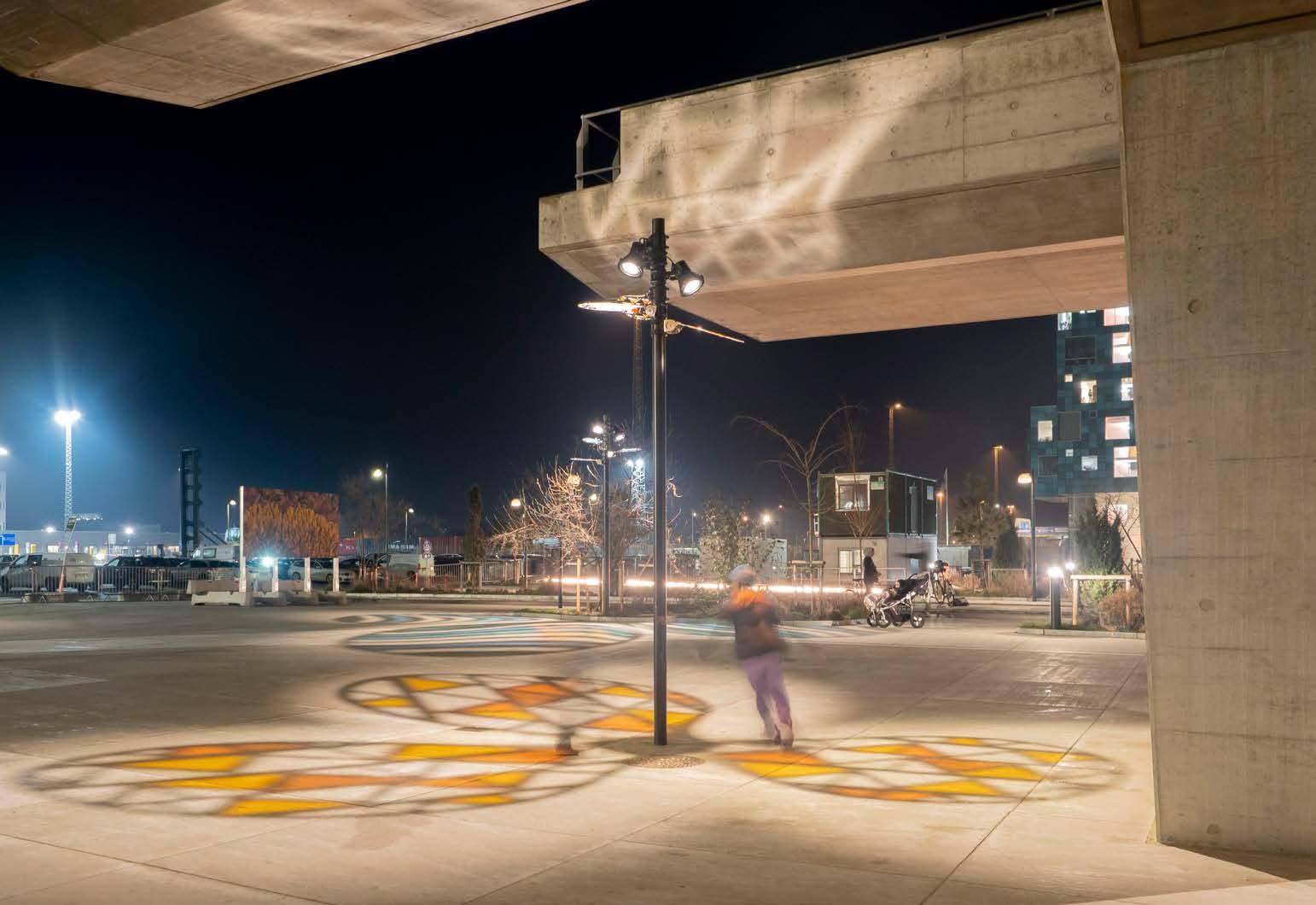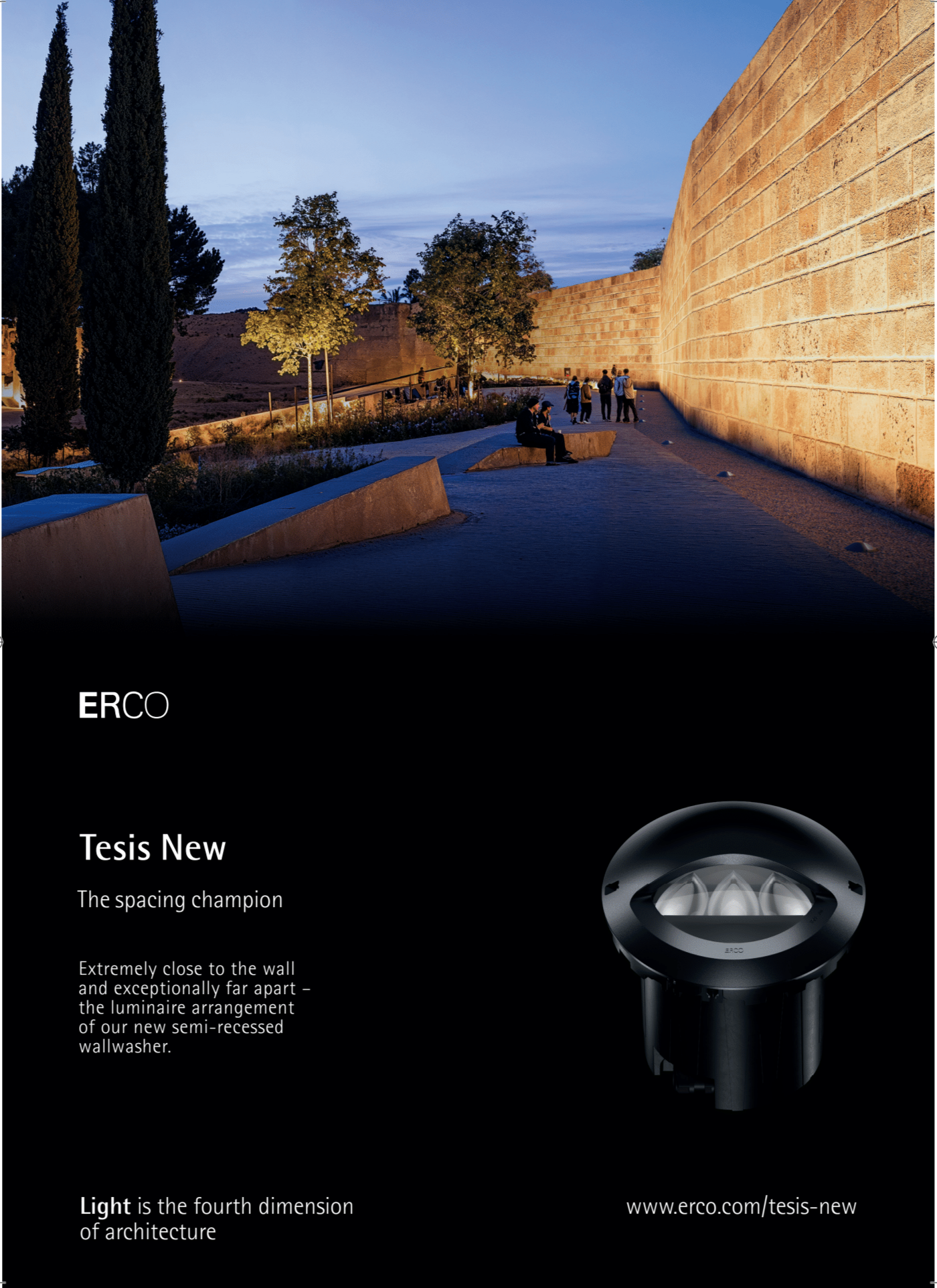
5 minute read
How Light can Boost Communities
Lighting plays a crucial role in shaping social spaces and influencing human behaviour, making it an essential tool in promoting social purpose. In public spaces, effective lighting can enhance safety and accessibility, encouraging positive interactions and community engagement. Well-lit environments reduce the risk of accidents and crime, fostering a sense of security, while also making spaces more inviting for social gatherings, education, and collaboration. Here we look at three projects have made an impact with local communities and the urban fabric.
Orientkaj Metro Station, Copenhagen, Denmark
This transformational light installation at Orientkaj Station in Copenhagen has won a PLATINUM in the Build Back Better Awards 2023 in the lighting category.
Light Bureau was challenged to create a site-specific lighting art installation that would increase feelings of safety while bringing delight and visual interest to the space. As lights couldn’t be fixed on the railway structure, the team created a pole-based system, with remote steel leaves, each with individual patterns and colour themes.
The leaves are made of saltwater- and acid-resistant stainless steel with a lifespan of several decades. The surface is electro polished to make them highly reflective, thereby adding an additional lighting component.

The steel leaves give the otherwise ordinary spotlights a completely new and unique character, giving the area a distinctive identity that makes it an inviting and exciting urban space.
The design softens up the bright spotlights and adds a playful atmosphere, while improving perceived safety and wayfinding on the square.
With minor adjustments of the reflectors, it was possible to reuse the existing LED-luminaires and create a spectacular illumination of the station square and elevated railway, without using additional energy.
The luminaires are iGuzzini Woody in warm white with a wide flood optic.
Lighting design: Light Bureau
Lighting design team: Eszter Horóczi, Filipe Almeida, Frederik Waneck Borello, Helle Frøjk Knudsen and Rune Brandt Hermannsson.
Client: By & Havn and Copenhagen Municipality
Architects: COBE architects
Construction: Per Aarsleff
Consulting engineers: Wicotec Kirkebjerg
Suppliers: Gladsaxe Klip & Buk, Induflex, Unicoat and iGuzzini.
Pictures: Rune Brandt Hermannsson (formerly of Light Bureau)
Westway, London, UK
Situated beneath the Westway elevated carriageway, this project set out to transform the landscape, boost community wellness, and increase the usage of the area. The lighting intervention focused on key areas of pedestrian difficulty and poor visibility, providing good visibility and feelings of safety in dim or after-dark conditions. Trilux designed the bespoke LED donut-shaped luminaires, pictured. specifically for this location to uplift the space. These luminaires, combined with Combial LED floodlight, are installed around and fixed to the columns under the roadway. The additional indirect lighting element and illuminated vertical surfaces create a welcoming atmosphere, visual guidance, and a secure ambience for the local community.

Westway Trust, Community Street Project Manager, praised the outcomes, stating, ‘The new lighting solutions have significantly uplifted the evening landscape, making the area more desirable and secure for community activities. The feedback from stakeholders has been overwhelmingly positive, and we are excited about the positive changes this project brings to the Westway community.’ The lighting has helped to shape a future where the Westway Community Street is a safer, more connected, and vibrant public space, fostering community spirit and enhancing quality of life for all.
Lighting supplier: Trilux
Strategy: DK-CM Architects
Funding: GLA Good Growth Fund
Castlefield Viaduct, Manchester, UK
The illumination of Castlefield Viaduct – a 330m-long railway structure that’s been transformed into an urban park – was designed by Arup. Glimpses of light are designed to intrigue and entice visitors. Once inside, lighting discreetly draws visitors through, piquing their curiosity to explore further, but still allowing them to enjoy the night skyline from high level. Using gentle, warm-white light differentiates the viaduct from the urban scene and minimises impact on biodiversity, in particular bat roosts beneath the deck.
To maintain the drama and avoid overlighting, rechargeable hand-lanterns are on offer to support accessibility and inclusivity, allowing everyone to enjoy the space.
Luminaires styled like the overgrown grasses which inhabit the viaduct are positioned around seating benches and are preprogrammed using wireless BLE technology to glow in a gentle, random ‘swaying’ pattern to mimic the movement of nature in the breeze creating a magical experience.

The second section incorporates unique garden areas created by local community partners. Lighting was designed to provide focus within these planters, and to be easily reconfigured by the gardeners as the foliage grows and adapts to its space. At the end of this section, the internal event space is fitted with adaptable track and spot lighting to cater for any education or hospitality event, with festoon lighting allowing functions to spill out into the gardens.
The lighting levels are deliberately low, partly to enable the backdrop of the city to be visible through the structure but mainly to respect the flora and fauna already living on and around the viaduct. Power density for the site is less than 1W/m2.


